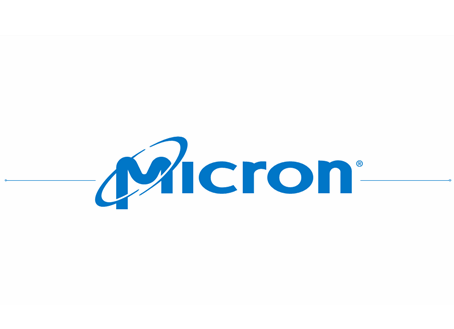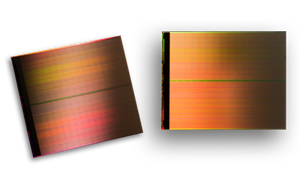Micron To Begin Shipping Products With TLC NAND This Quarter
Micron, maker of DRAM, NAND flash, and the industry's first new memory technology in the modern era -- 3D XPoint -- held an earnings call today. We were there and have some industry news to report.
Even though competitors Samsung, Toshiba and SK Hynix are shipping 3-bit per cell (TLC) flash, Micron still has high demand for 16nm and 20nm MLC flash. On the call, Micron stated it would ship TLC products this quarter (Q4 2015). This comes sooner than we expected after reporting from Computex that 16nm TLC would most likely ship in Q1 2016.
Micron calls current NAND market pricing "a bloodbath" but didn't divulge many details. It's not hard to figure out that Samsung has run the SSD market over with low-cost TLC shipping in products like the Samsung 850 EVO. Consumers see the 850 EVO as a high-performance client SSD that sells for mainstream prices. It sounds like Micron no longer sees 16nm MLC as a viable competitor to Samsung, Toshiba, and SK Hynix TLC.
Micron talked briefly about upcoming 3D NAND flash. By the end of 2017, 3D flash will ship in higher volume than the company's 2D NAND flash products. 3D flash will ship in the first half of 2017. Micron will release both MLC and TLC in 3D, but the company didn't give a timetable for the two distinctive products. Both 20nm DRAM and 3D NAND are ahead of schedule, though.
3D XPoint was covered less than 3D on the call, and we didn't learn anything new other than a reference to 8K gaming. Micron was still bullish on 3D XPoint first entering the gaming market. If you recall, this is a non-volatile memory product that offers the speed of DRAM at prices closer to NAND. 8K video gaming is a very specific mention that leads us to really wonder if the first iteration of 3D XPoint will be as storage-specific as we first thought (such as SSDs). Micron sells DRAM memory to graphics card makers already. I'm betting my money on virtual reality (VR) products that will require large amounts of data that can be accessed at very high speeds to deliver a positive user experience. The 3D XPoint end product mystery continues.
Other applications that will benefit from the technology in 2017, according to Micron, are super high-end enterprise storage, medical imaging and low latency dependent databases. All of these applications could come from traditional storage connection methods with NVMe over PCIe being the most logical.
Both 3D NAND flash and 3D Xpoint will be manufactured in Singapore, where Micron will invest six to eight million dollars for expansion. The company has recently invested #1.85 billion USD in equipment costs this quarter.
Get Tom's Hardware's best news and in-depth reviews, straight to your inbox.
Chris Ramseyer is a Contributing Editor for Tom's Hardware, covering Storage. Follow him on Twitter and Facebook. Follow Tom's Hardware on Twitter, Facebook and Google+.

Chris Ramseyer was a senior contributing editor for Tom's Hardware. He tested and reviewed consumer storage.
-
dgingeri Mistake, mistake, major mistake. Samsung has already proven that TLC is a really bad idea and doesn't work right. Now we'll have a whole new line of products that have disappointing performance without constant rewrites.Reply -
TallestJon96 honestly, this is really being overshadowed by xpoint. Everything until then feels like a placeholder, and pricing is largely more important than performance for many.Reply
The mention of 8k gaming is very specific. Is it possible that Xpoint will be used in GPUs? -
gangrel ReplyThe mention of 8k gaming is very specific. Is it possible that Xpoint will be used in GPUs?
That's the way I read it. Makes sense, too.
Also, I agree about the waiting game, to a point. Problem is that something like a new, mega GPU with 16G of XPoint is still a fairly long way off. They can't just sit for that long. The TLC is mostly ready to go. It does suggest that any improvements to prior tech, or even TLC, that aren't particularly mature, may wither, at least insofar as development all the way out to finished product. IF it made sense to do so, I could see proof-of-concept 2D NAND for, say, the 10 nm fabrication process. -
Sakkura Reply16715671 said:Mistake, mistake, major mistake. Samsung has already proven that TLC is a really bad idea and doesn't work right. Now we'll have a whole new line of products that have disappointing performance without constant rewrites.
The Sandisk Ultra II and Samsung 850 Evo have already proved that the issues encountered by the 840/840 Evo are not something that will affect all TLC-based drives. It was the first mass-market SSD to rely on TLC, it's not surprising that there would be some teething difficulties. TLC in general is fine. -
spacev Using it for 8k gaming is just nuts! If that is where they want to use it, oh boy.Reply
Also, last I heard, it was not as fast as DRAM.
4k gaming barely works with current high end cards, 8k is 4 times the pixels.
Plus, most people have 28 inch displays at best and 8k is overkill.
There will be no 8k gaming consoles in the foreseeable future and the PC ultra enthusiast market is minuscule! I dont see mainstream 8k gaming before 2020.
So good luck Micron..... -
norseman4 ReplyMistake, mistake, major mistake. Samsung has already proven that TLC is a really bad idea and doesn't work right. Now we'll have a whole new line of products that have disappointing performance without constant rewrites.
http://www.legitreviews.com/4tb-ssds-coming-in-samsung-850-pro-and-850-evo-series_172731
What's the difference between TLC and 3-bit MLC. I don't know of any, and Samsung is looking to release 4GB(oops) 4TB 3b MLC next year. -
Sakkura Reply16718629 said:http://www.legitreviews.com/4tb-ssds-coming-in-samsung-850-pro-and-850-evo-series_172731
What's the difference between TLC and 3-bit MLC. I don't know of any, and Samsung is looking to release 4GB 3b MLC next year.
TLC and 3-bit MLC are just two different names for the same thing.
The TLC Samsung is releasing next year is not 4GB, it's 256 Gbit = 32 GB. -
Rookie_MIB TLC is the wrong direction. 3D/V-Nand is the right way. MLC bit setup, large, stacked lithography gives you all the density and write endurance you could need. Yes, a little more complicated when going vertical, but dealing with the TLC issues is just too much trouble IMHO.Reply -
norseman4 Reply16719125 said:16718629 said:http://www.legitreviews.com/4tb-ssds-coming-in-samsung-850-pro-and-850-evo-series_172731
What's the difference between TLC and 3-bit MLC. I don't know of any, and Samsung is looking to release 4GB 3b MLC next year.
TLC and 3-bit MLC are just two different names for the same thing.
The TLC Samsung is releasing next year is not 4GB, it's 256 Gbit = 32 GB.
I was pretty sure that it was the same thing, but not 100%.
As for Samsung's release, from my linked post:
Samsung announced that the 850 EVO and 950 PRO would be among the first drives to get the new 3bit V-NAND technology and that we’ll be seeing 4TB capacities of those drives in 2016.
-
Sakkura Reply16719306 said:TLC is the wrong direction. 3D/V-Nand is the right way. MLC bit setup, large, stacked lithography gives you all the density and write endurance you could need. Yes, a little more complicated when going vertical, but dealing with the TLC issues is just too much trouble IMHO.
You can combine 3D and TLC. That yields higher capacities than either 3D MLC or 2D TLC, and works better than 2D TLC. In any case, the TLC issues are manageable as proven by the Sandisk Ultra II.
Ah. You said GB instead of TB.16719350 said:As for Samsung's release, from my linked post:
Samsung announced that the 850 EVO and 950 PRO would be among the first drives to get the new 3bit V-NAND technology and that we’ll be seeing 4TB capacities of those drives in 2016.

